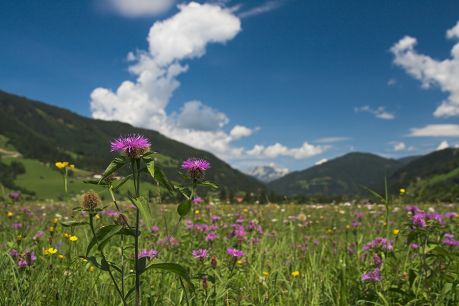Climate effects on ecosystems

Bergwiese-Salzburgerland
By Thomas Huntke, Germany (der Uploader) http://www.huntke.de (Own work (Original text: Eigenes Foto)) [CC BY-SA 3.0 de (http://creativecommons.org/licenses/by-sa/3.0/de/deed.en)], via Wikimedia Commons
A study linking changes in plant and microbial ecosystems to environmental factors has highlighted how these ecosystems may alter in response to climate change.
Global climate change will have both foreseen and unforeseen impacts on
different ecosystems around the world. As such, understanding the
effects of global climate change on animal and plant communities is
increasingly important.
Not much is known, however, about how global climate change will alter the activity of microorganisms that perform important functions in all ecosystems. These activities include decomposing organic matter and converting atmospheric nitrogen into organic compounds that plants can use as nutrients (known as nitrogen fixation).
An EU-funded initiative called METAECO (Analysing the impact of global climate change on ecosystems: A cross-scale metatranscriptomics approach) looks at how important environmental factors affect microbial ecosystems. Researchers have related these effects to previous data gathered on herbivore and plant communities to gain a more complete picture of ecosystem functions.
Using field experiments, METAECO studied how adding nitrogen fertilisers and increasing temperatures (alone and in combination) affect interactions between microbial and plant communities. Researchers also looked at how climate-influenced changes in community structures could influence plant invasion.
Researchers found that both nitrogen fertilisers and increased temperatures significantly altered the composition grasses in their experiment. Adding nitrogen had the greatest effect, however. It lowered the number of nitrogen-fixing species that could colonise the field plots, and decreased the variety and complexity of the ecosystem's biological processes.
In contrast, microbial communities were strongly affected by increasing temperatures rather than nitrogen, with some bacterial species becoming more abundant at the expense of others.
Overall, researchers found that warmed plots contain more bacteria that can live in environments with low nutrient levels (termed oligotrophs). These use limited resources efficiently, but grow very slowly and generally indicate a more stressed community.
By extending their knowledge to include interactions between plants and microbes, this study will help scientists to better understand climate change effects on ecosystem function.
published: 2016-02-12

